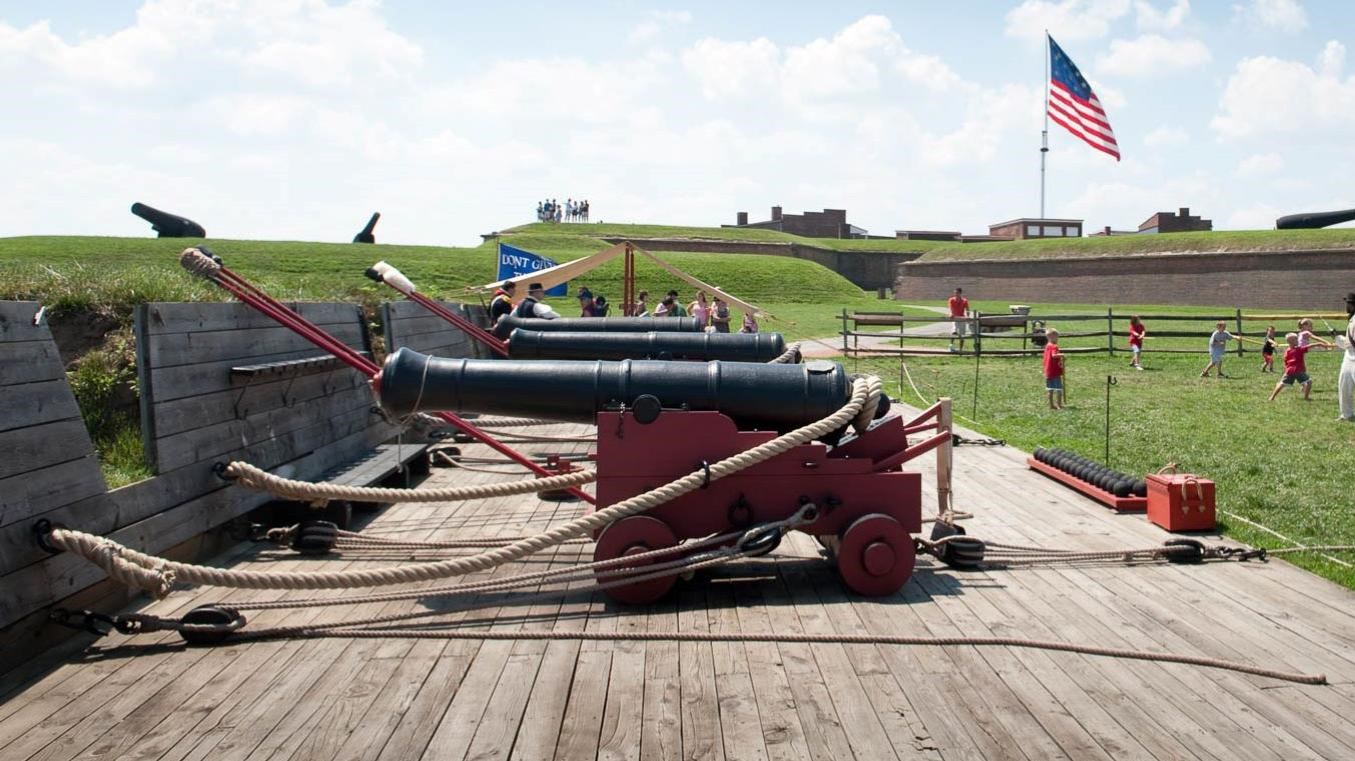Last updated: February 20, 2021
Place
Water Battery

NPS/Tim Ervin
Accessible Sites, Cellular Signal, Historical/Interpretive Information/Exhibits, Wheelchair Accessible
These reconstructed defenses are representative of the main defenses at Fort McHenry which were located outside of the star fort itself. Under the direction of Captain Samuel Babcock, U.S. Army Engineers, civilian laborers, along with members of the First Marine Artillery of the Union, worked throughout the summer of 1813 on improving the Upper and Lower Water Batteries and mounting 18- and 36-pounder naval guns.
Both the Upper and Lower Water Batteries were originially built as part of the Revolutionary War fort, Fort Whetstone. In 1813 the works were again improved under the direction of Captain Samuel Babcock, U.S. Army Engineers. The battery initially mounted guns of 18- and 36-pounder size, with at least three more added prior to the battle in 1814. The batteries also featured a brick hot shot furnaces.
These water batteries were charged with keeping the British ships at bay, and had a range of a mile and a half. When the British ships reached what Armistead believed to be "good striking distance," he ordered "fire to be opened, which was obeyed with alacrity" with "a roar that shook the whole harbor..." and within half-an-hour the "intruders again sheltered themselves by withdrawing beyond our reach." The garrison "gave three cheers and again ceased firing." The British ships "continued throwing shells," at the forts and batteries.
